Trending
Opinion: How will Project 2025 impact game developers?
The Heritage Foundation's manifesto for the possible next administration could do great harm to many, including large portions of the game development community.

Featured Blog | This community-written post highlights the best of what the game industry has to offer. Read more like it on the Game Developer Blogs or learn how to Submit Your Own Blog Post
With the advancement of technology in computer games, 3D games are becoming very common. But years back when there was no support for 3D elements, it was quite hard to develop 3D games but solution found at that time was an Isometric view, of 2D elements.

With the advancement of technology in computer games, 3D games are becoming very common. But years back when there was no support for 3D elements, it was quite hard to develop 3D games but solution found at that time was an Isometric view, of 2D elements.
Top 10 Most Popular Isometric Games:
Clash Of Clans
Plants vs Zombies
Hay Day
Boom Beach
Kingdom Rush
Monument Valley
RollerCoaster Tycoon
Castle Defense
Crossy Road
Village City
Let's see what we are going to make:
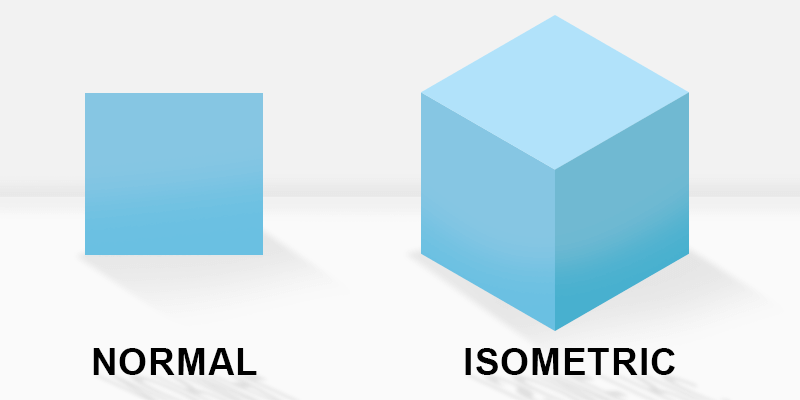
isometric
Isometric view in simple words is nothing but creating an illusion of 3D game for a game created in 2D.
Isometric view can be created by one of the most common and efficient approach called tile – based approach.
As isometric view creates an illusion of 3D, sometimes it also referred as pseudo 3D or 2.5D.
Earlier games like Q*bert from 1982 was one of the first games to use an isometric view.
Today big games like Clash of Clans, Age of Empires use this kind of projection.
You might face some of the following issues while Developing Isometric Games in Unity:
Calculation for positioning tiles in a way such that it creates a 3D view of gameplay is complex.
Mapping actual location of the object in a world space / Game space to the location in isometric view is complex and time-consuming.
Unity does not have any direct tool or support for Isometric projections.
Most of the 3rd party Tools available until now, were not strong enough or optimized enough for developing smooth and proper Isometric games.
Calculations for map generation are heavy, for now, no tool was right enough, to load Isometric maps at an optimized rate.
While researching for this, I checked a lot of tools from Unity Asset Store. But the one, which I really found impressive was the asset called Ultimate Isometric Toolkit
Here is an overview of Ultimate Isometric Toolkit:
Unity as a 3D engine is quite good for developing 3D games
Of course, it comes with the overhead of creating and rendering 3D objects.
But when it comes to the Isometric games you need a lot of additional code to solve common problems like sorting orders, intersecting sprites and continuous movements.
The advantages of Isometric style 3D games are obvious. We can save a lot of time since we do not have to model/texture/rig/... 3D Objects
We completely eliminate the overhead of rendering 3D scenes, and hence saving a lot of money by taking one of the hundreds of sprite sheets out there.
Calculation of positioning tiles to create a 3D illusion and Mapping of an actual location of an object to a location in isometric view is handled by the toolkit.
The problems of sorting orders and such other hard algorithms used for creating isometric views are all taken care of by this toolkit with very low overhead.
Let us understand this Toolkit with a very simple example
We will try to understand following things from this example:
Creating simple base in an isometric view.
Placing some objects on that base.
Translating object in Isometric Space
Collision detection in Isometric space
Sprite Management
Functionalities of Ultimate Isometric toolkit
Let's get started.
This is how you can create Isometric Level:
Create a project in Unity with 2D settings
Import Ultimate Isometric Toolkit package in your project (you can get the tool from here)
Now, let's first create a base of the tile map.
Create a prefab for the tile, which will be used to create your base. (For that you can use any sprite of block available with toolkit.)
Add IsoObject and IsoCollider script into the prefab.
Now, Take an empty gameobject in the scene called LevelGenerator.
Now add LevelGenerator.cs Script to the gameobject. LevelGenerator script will be stored in Ultimate Isometric Toolkit > Code > IsometricTools > Other.
Let us now understand LevelGenerator:
Size represents the size of the tile map shown in the following image.
In LevelGenerator, how the tiles will be placed in the scene is represented by the following image. Base in this image is created with size (x, y, z):(20, 20, 1).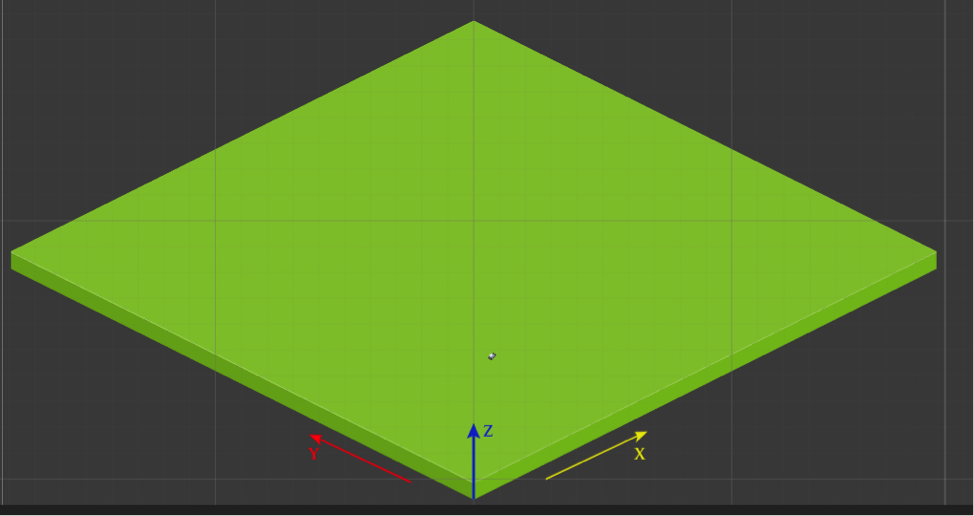
level-generator
Tile Size represents a size of each tile to be placed on the map. It scales the isometric position of an IsoObject relative to its position in the tile map.
Seed will be used for creating random maps
Roughness represents how roughly the tiles will be placed. With more roughness, the tiles will be more scattered around to show its roughness
Amplitude represents number of layers of tiles to be used in the map
Prefab reference to the IsoObject script on the tile prefab you have created.
Set these properties as shown in the Following image (click to enlarge):

levelgenerator
Here, you have to set a reference to your prefab in Prefab property.
This will create a plane like in the following picture:
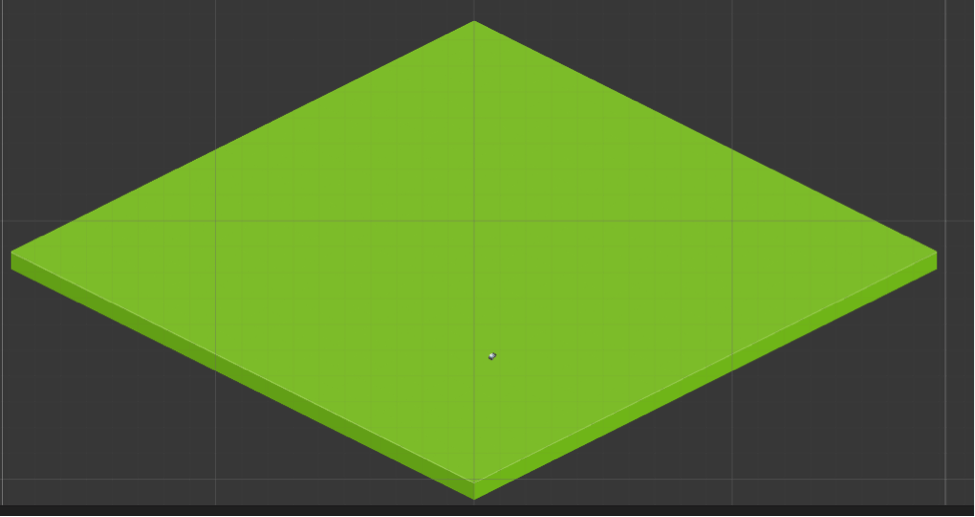
create-plane-picture
Now If you check, each tile (gameobject) created, will have two scripts attached to it
IsoObject:
Base class that makes a Game Object an Isometric Object. And it represents position and size of that tile
Everything in the scene has a transform component attached and is part of your isometric game. Even empty gameObjects should have this component attached.
IsoCollider:
This enables collision detection in isometric gameobjects by adding mesh collider automatically
TIP: Do not forget to add IsoCollider and IsoObject while creating prefab for the map
Now, let us create a border around the map, by selecting a different prefab.
Here, I have made different prefab for creating boundary just like the prefab for the base.
We have created something like this for the demo:
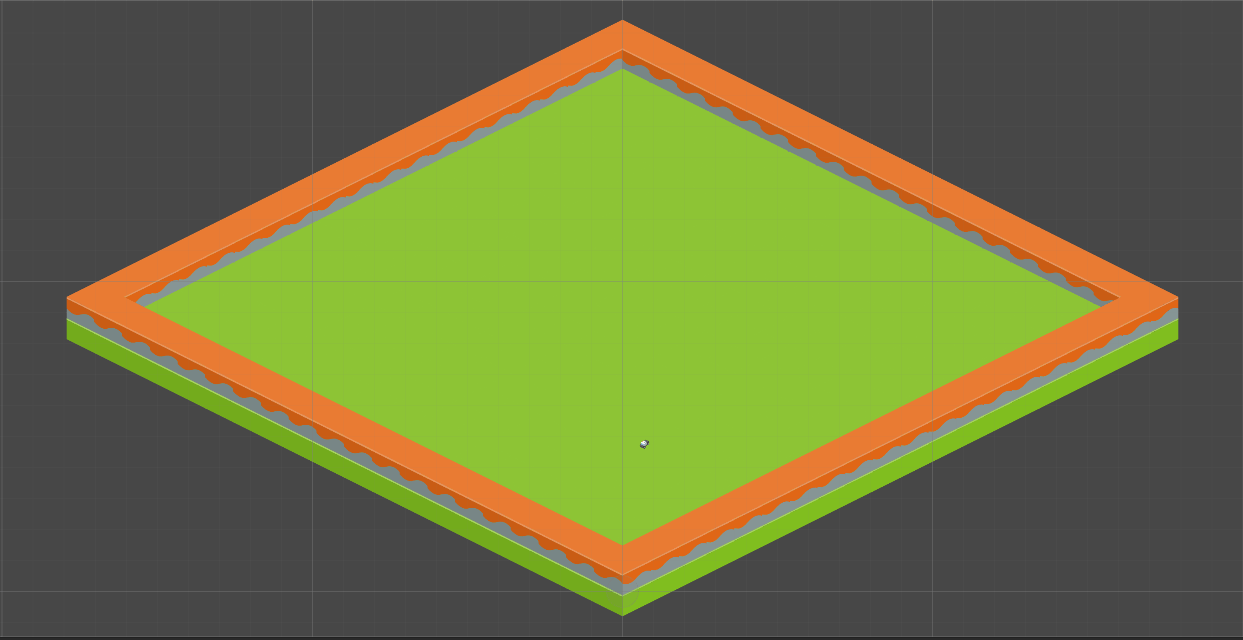
gridwithborder
Tip: You can also manually create the boundary but it will be time-consuming. So, here I have made some modifications in the GenericGridMap script of Ultimate Isometric Toolkit for creating Boundary as per my need.
Now manually add objects as per your need. Just drag & drop the prefabs available with a toolkit on to your base as shown in the following image.
Here, I have taken prefabs of some of the atlas, some of the cactus, some of the trees and a car for creating the scene as shown in the following image:
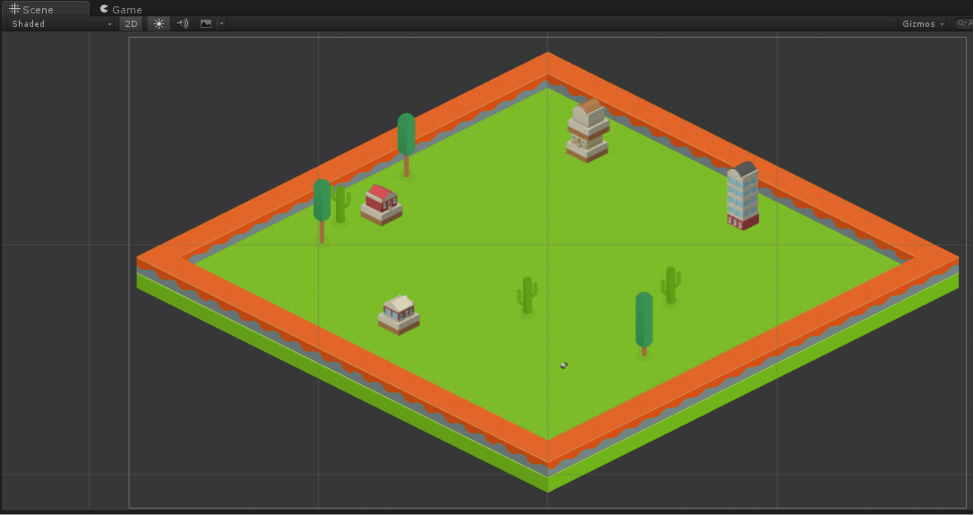
creating-scene
This shows how easy it is to create an isometric map, using this tool. We do not have to worry about all the sorting algorithms at all. This tool takes care of all and allows us to concentrate on the core functionality of the game.
Let us create a script for translation/movement of an object on the isometric map. Attach this
CarController script on the prefab of the car.
CarController Script:
public class CarController : MonoBehaviour { public float speed = 10; public SpriteRenderer spriteRenderer; public Sprite carSpriteNorth; public Sprite carSpriteSouth; public Sprite carSpriteWest; public Sprite carSpriteEast; public GameObject explisionPrefeb; private IsoDirection currentDirection; private Vector3 targetPosition; void Start() { currentDirection = IsoDirection.North; spriteRenderer.sprite = carSpriteNorth; } void Update() { if (!GameManager.Instance.isGameRunning) return; //North if (Input.GetKeyDown(KeyCode.UpArrow)) { currentDirection = IsoDirection.North; spriteRenderer.sprite = carSpriteNorth; } //South else if (Input.GetKeyDown(KeyCode.DownArrow)) { currentDirection = IsoDirection.South; spriteRenderer.sprite = carSpriteSouth; } //West else if (Input.GetKeyDown(KeyCode.LeftArrow)) { currentDirection = IsoDirection.West; spriteRenderer.sprite = carSpriteWest; } //East else if (Input.GetKeyDown(KeyCode.RightArrow)) { currentDirection = IsoDirection.East; spriteRenderer.sprite = carSpriteEast; } targetPosition = Isometric.vectorToIsoDirection (currentDirection); transform.Translate (targetPosition * Time.deltaTime * speed); } void OnCollisionEnter(Collision other) { if (other.gameObject.CompareTag("Finish") && GameManager.Instance.isGameRunning) { spriteRenderer.sprite = null; Instantiate(explisionPrefeb, transform.position, transform.rotation); GameManager.Instance.OnGameOver(); } } }
As shown in the script, we will have four different sprites for each direction. So, the car will have a separate sprite for each of the four directions.
The translation process of an isometric object is quite different than what we do while we are doing the normal transform.
For isometric translation, we will have to calculate the direction with respect to the isometric map.
For that, we will use Isometric class function
Isometric. vectorToIsoDirection (IsoDirection)
Here, we are using this function for moving a car in one of the IsoDirection i.e. North, South, East or West.
This function returns the projection vector of IsoDirection in Isometric map. Projected vector will represent the actual location/position of the car in a game space of Unity.
So, after getting the target position to move the car, we can pass that target position to Translate method of Transform class in Unity.
This is how we can create a simple Isometric game using this powerful tool.
This demo took me around an hour to complete, which is not bad considering I had to do some research in the tool itself. If I had known this tool already, it wouldn’t have taken more than 10 minutes to create the demo.
Here are some of the other advantages of Ultimate Isometric Toolkit:
Can Handle Thousands of sprites at a time, with very less overhead
Editor tools to simplify the workflow in Unity
Support for all the platforms provided by Unity
Runtime Level generation
Controller scripts for various use cases
Proper documentation
Offering both a lite and pro version
User-friendly support via email, videos, unity forum, etc.
Everything sorted and prefabbed
Mouse and Touch input support
Conclusion:
Creating isometric view games become very easy and very less time taking by using the Ultimate isometric toolkit. Toolkit’s structure is very powerful. which is very easily understandable. Which makes it class apart from other isometric toolkits.
Feel free to contact us if you really liked this blog. And don’t forget to share your comments below!
Read more about:
Featured BlogsYou May Also Like